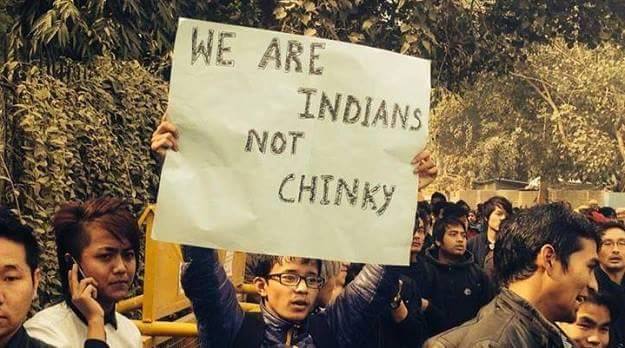POLICY MAKERS
The North-Eastern part of the nation has been a bone of contention for decades with dissent and disillusionment looming over inadequate development and lack of policy intervention.
Mehdi Hussain is a PhD student at the Centre for South Asian Studies, School of International Studies, JNU, New Delhi.

In India’s state-bureaucratic set up, a ‘policy’ assumes the will of the people and acts for the people. A policy is created by the elected government with inputs from the bureaucracy and then implemented by state bureaucratic apparatuses. Thus, having a ‘policy’ suggests the focus area of the government, and, thereafter the government comes under the obligation to execute it. Of paramount importance to India’s Foreign Policy is the Act East Policy (AEP) of 2014- a continuum of the Look East Policy (LEP) of 1991- which like its predecessor does not have a precise policy document that defines Northeast India’s place in it. A specific ‘policy’ document outlines the methods and behaviors of various bureaucratic organisations. However, statements on AEP comes from the political leaders and top bureaucrats who are assumed as the ‘policy guidelines’.
Instead, ‘Act East’ as a policy should have meant a stronger catalyzing push of the government rather than a matter of ‘goodwill’. It means the government will no longer work as per its ‘willingness’ to perform. It, thus, not only becomes a commitment but also gives clarity on the means and methods to achieve the objectives of development. For Northeast India, an effective and strong policy can provide this on a long-term basis. It becomes evident from the fact that the Northeast region still waits for proper infrastructure after having LEP placed for over 25 years. In context of policy execution, the debate on ‘Look’ versus ‘Act’ basically arises from one lacuna in India’s foreign policy, i.e., the lack of the government’s will to implement its promises and agreements. Then, there is little mention of two factors:
- The role of the northeast states
- The institutional devolution of the Central Government jurisdiction.
The Central Government here is the facilitator as well as enabler of the AEP which in a way keeps the states ‘passive’ and waiting for further directions from the Centre.
A good intention is not enough. An unwavering commitment backed up substantive policy execution can come from a well-laid out policy that could drive the state machinery towards it. A perfect example of a well-crafted document is the North Eastern Region (NER) Vision 2020. It lays down a timeline for achieving the goals and objectives of the governments highlighting the issues and challenges with key action areas supported by the action plans for its operationalisation.
It also details the steps needed to be taken up by bureaucratic organisations, for example, the North Eastern Council to bring a developmental change in the region. Similarly, the Hydrocarbon Vision 2030 for Northeast India is another such document which can further be developed into an appropriate and a clear-cut ‘Hydrocarbon Policy’ for the region. Then, a policy measure for NER is the North East Industrial and Investment Promotion Policy (NEIP), 2007 for improving the business climate in the region.
In the context of NER, we see LEP or AEP becomes a supplementary factor in envisaging a change in the development-deficit region as seen in international agreements or other policy statements when there is a goal of connecting the region’s development with foreign policy. However, the AEP should be the pioneer for the socio-economic development of the region. The reason behind this belief is that in the past the people were culturally more connected with their present neighbors and economically more sustainable. To achieve this, many academic researchers have shown the need for developing a ‘border region’. The simple opening of Land Custom Stations at the borders has not served the target of a trade-led development in the region. For example, trade at Moreh Land Custom Station on the Manipur side is limited due to several factors: the restriction upon items of trade with the corresponding Tamu on the Myanmar side; it is subject to day-light trading only; and, excessive military checks on the road. All these hindrances constitute non-tariff barriers which is a manifestation of weak commitment towards the stated purpose.
In political statements, the incentive to pan the camera to the NER comes via LEP or AEP. It is said that the NER has a lot of potential in the wake of India’s shift its gaze to the East from the West since the liberalisation of 1991. However, the discourse should have begun with NER acting as the ‘anchor’ to connect the separated lands of South Asia and Southeast Asia. The recent convergence for AEP and NER comes in the light of the opportunities that the region offers to international trade and commerce.
The spurt of interest in NER arises from the fact that the region and its neighbors demand for a similar push for infrastructure development. However, connectivity in the region is a tip of the iceberg in the gamut of issues that require to address. On top of the hierarchy of issues, one that requires the utmost focus is the issue of ‘value creation’ in nature such as the likes of new conceptual generation, for example, looking ‘border’ per se not as ‘geographic line’ that only divides cultures, communities, and identity but as ‘borderland’ that assumes collectiveness of all of these factors. The next step is to test and implement this conceptual formulation backed up by a meticulous as well as broad approach.
A ‘re-mapping’ of Northeast India through a different model of region-building which requires a new governance of borderland is the need of the hour. Moreover, creation of a “Borderland lobby” in New Delhi should address the predominance of the overwhelming security concerns over the local actualities. This will increase more sustainable stakeholders in the development process of the region with ever expanding scope of discourse generation. Thus, a collaboration of state, private and other non-state actors is necessary not just at the idealization level but also at the level of execution.
Further, several policy measures recommended in the NER Vision 2020 have been undertaken. For examples, India’s investment in the infrastructure project in Myanmar; increasing financial flow to the region; and bringing national economic development into the foreign policy initiatives. This is the impact of having a clear policy strategy, irrespective of which party comes at the Centre. In short, NER as the ‘vanguard’ of the LEP or AEP is a by-product of such policies and documents.
Thus, a clear-cut policy design should give an impetus to chalk out the priorities and goals for each state which after facilitated by the Centre could enable these states to determine their course of action. Now even though New Delhi does want to improve trade partnership with its neighbors in the east there are little satisfactory changes because the conditions of trade are negotiated by the Central-level Government. It is a matter of debate whether this should be allowed or not. For a development of NER at a leap-frog pace there is a need to remove the idea that AEP in NER is a tiny portion of India’s interaction with the eastern countries. After developing it into a policy, this will move one step closer to becoming a ‘mature’ Act East.














